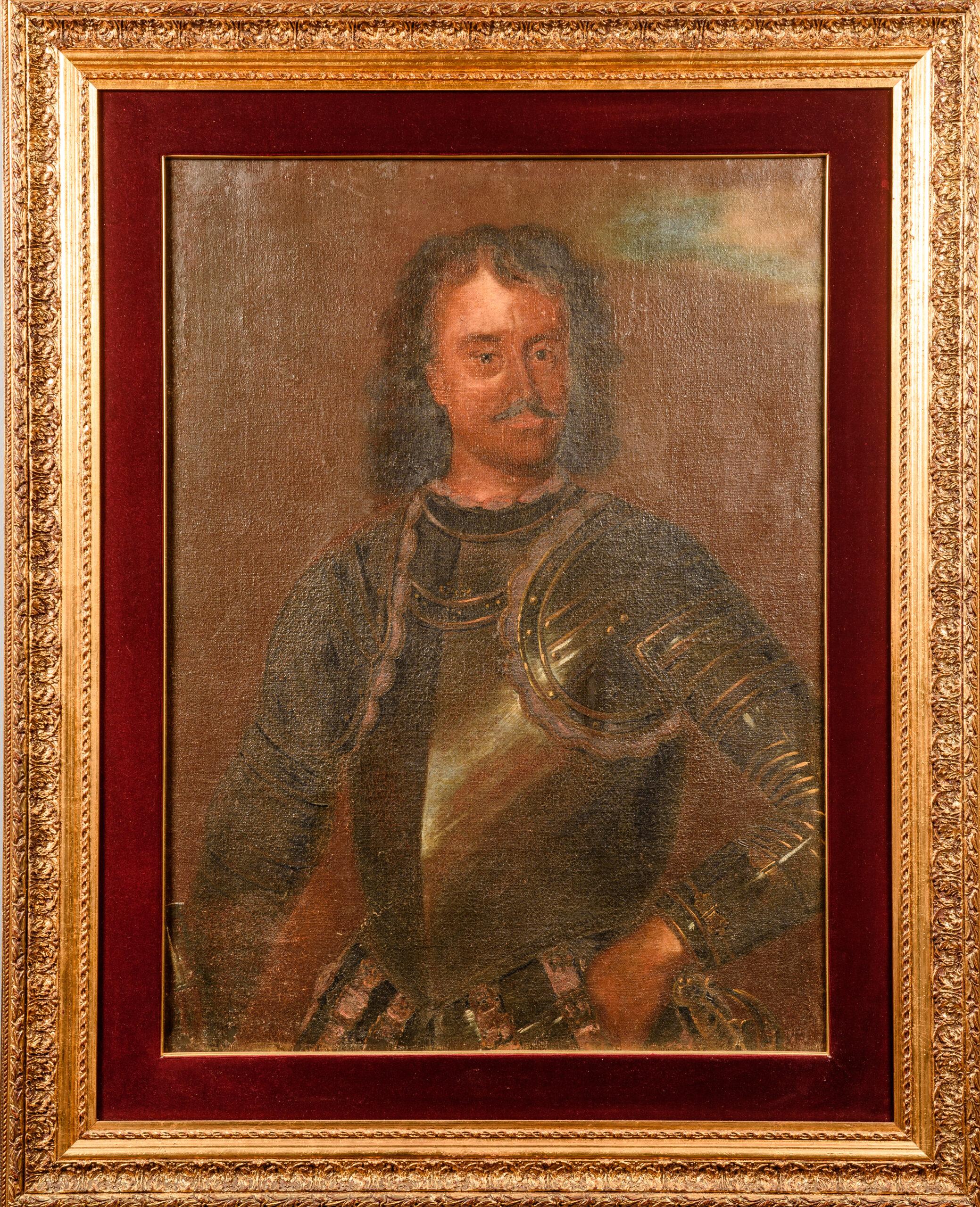
Tripo Kokolja:
Portrait of Vicko Bujovic,
oil on canvas, 18th century
Count Vicko Bujovic, the original owner of this palace in which the Perast City Museum is located. He was a sailor, a merchant, and was elected city captain several times. He participated in battles for liberation from Ottoman rule in the Moravian War and the liberation of Trebinje and Herceg Novi. He is also well known for participating in conflicts at sea with North African pirates.


Model of the nava type sailing ship "Santa Croce"
captained by Vicko Bujovic,
20th century
Model of the ship on which captain and warrior Vicko Bujovic sailed in the 18th century. It was one of the largest sailing ships of the time, equipped with more than forty cannons. On the bow is a Venetian lion carved in wood and on the stern is the flag of the Republic of Venice.

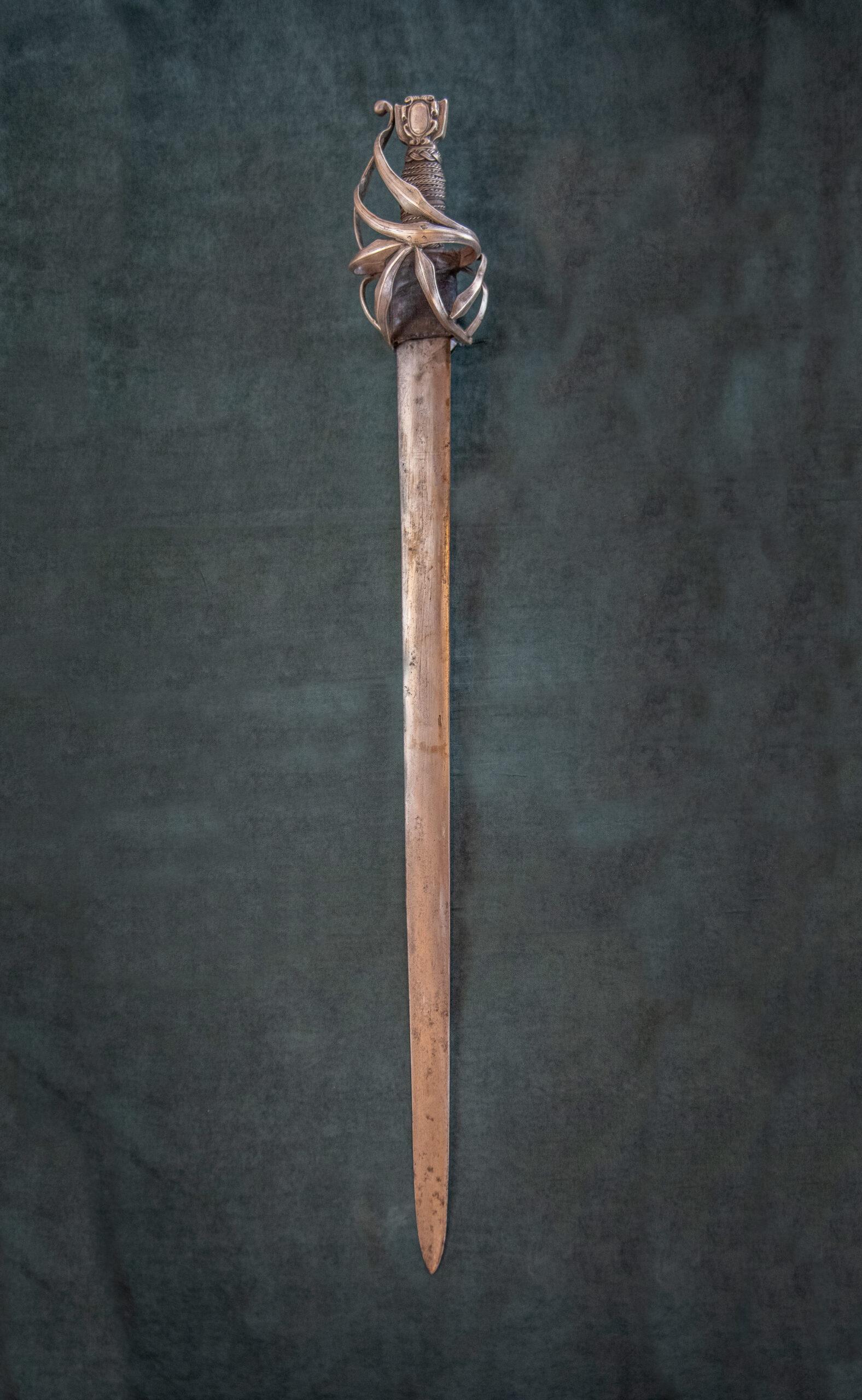
Vicko Bujovic's sword,
17th century
A Venetian schiavona type sword which belonged to Count Bujovic, which he used in a duel with Captain Osman Sabanovic, the dizdar (fortress comamander) of Herceg Novi. Count Bujovic emerged victorious from the encounter.

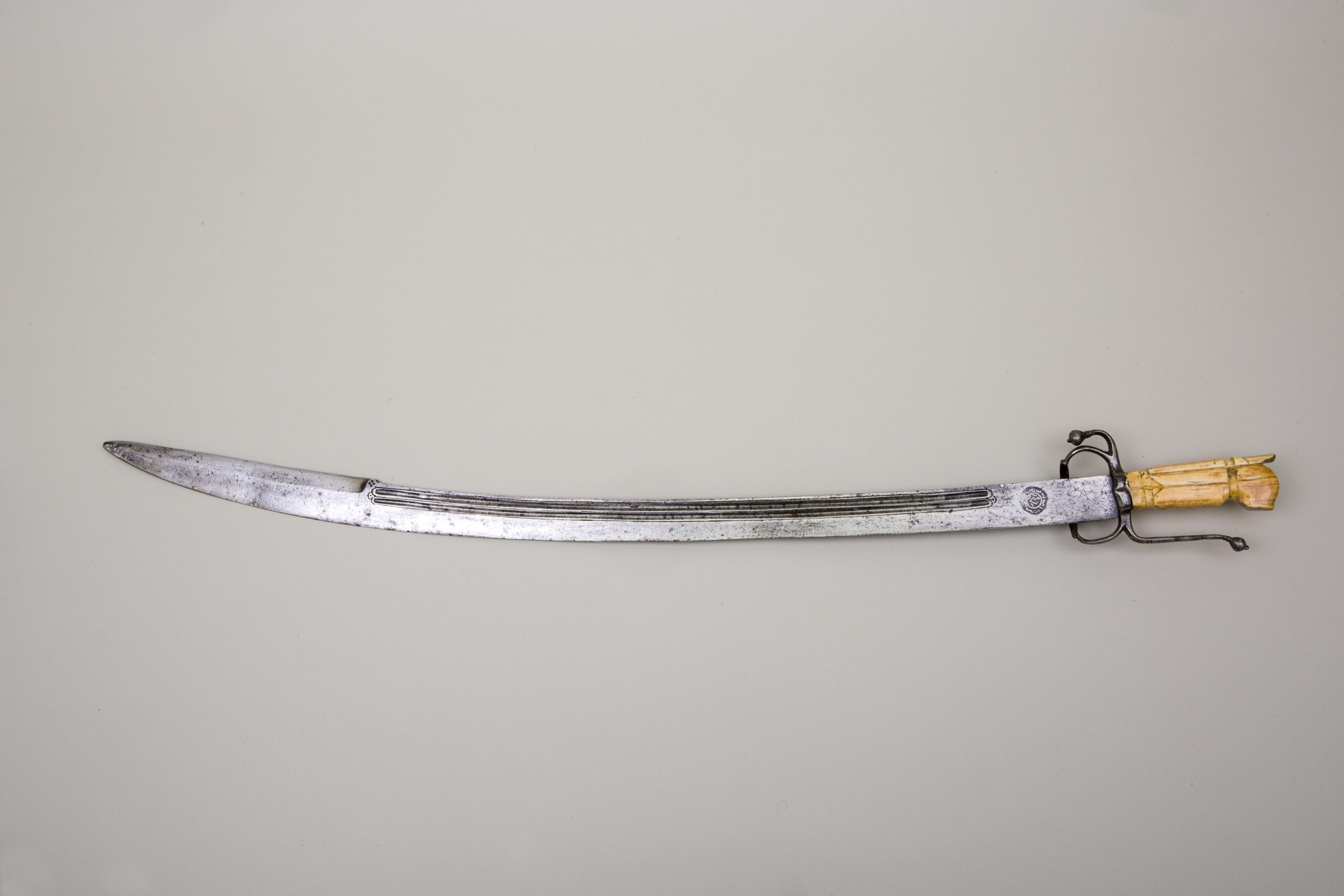
Captain Osman Sabanovic's saber,
17th century
A saber which belonged to Captain Osman Sabanovic, dizdar of Herzeg Novi, which Count Bujovic brought back to Perast as a trophy after winning a duel.

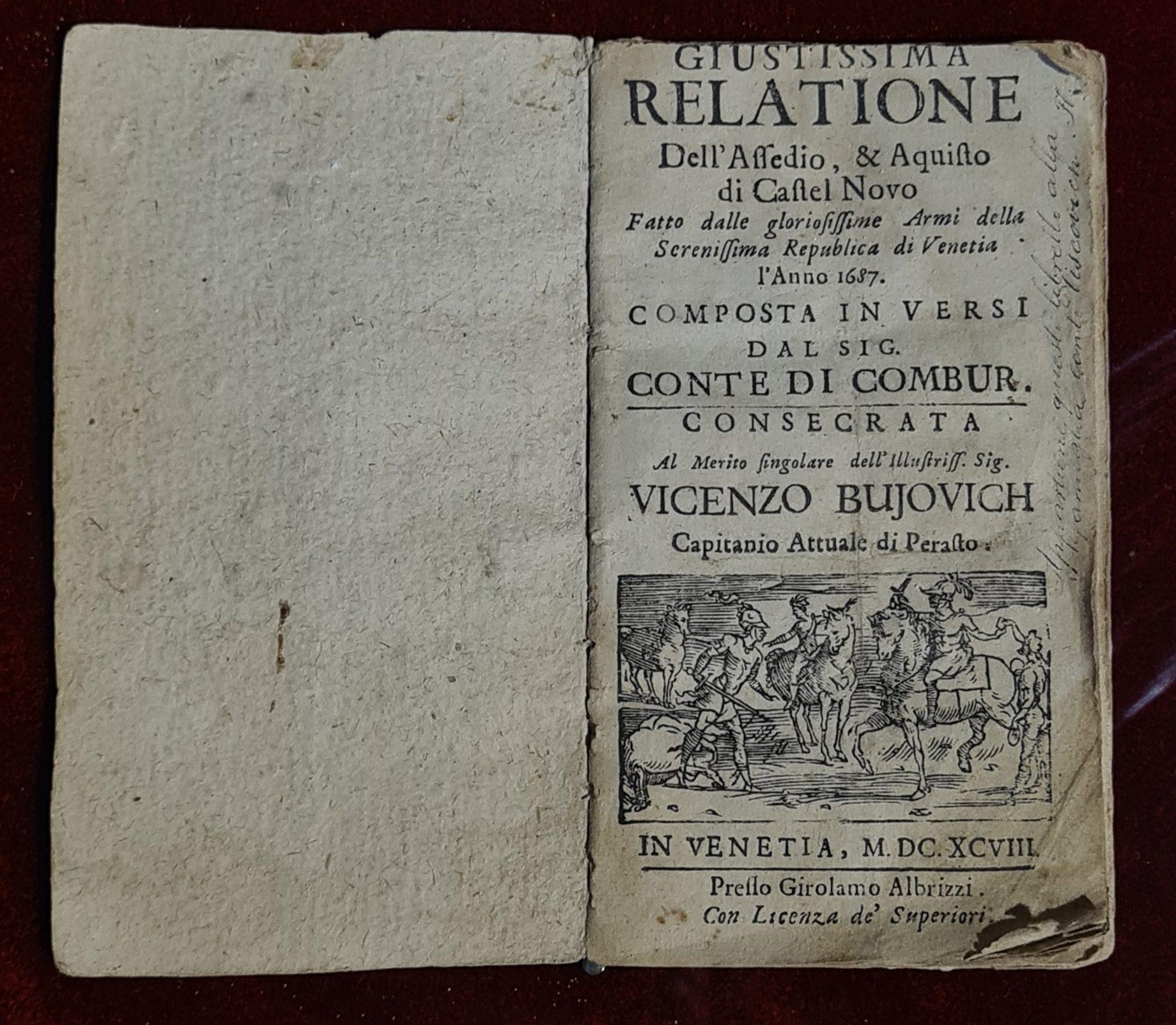
Marko Martinovic:
A true account of the siege and conquest of Herceg Novi, poem,
Venice, 1687.
Poem Relazione in which Marko Martinovic from Perast described the siege and liberation of Herceg Novi from the Ottoman military forces in 1687. The poem mentions Captain Vicko Bujovic, who led Perast's company in the battles for liberation .

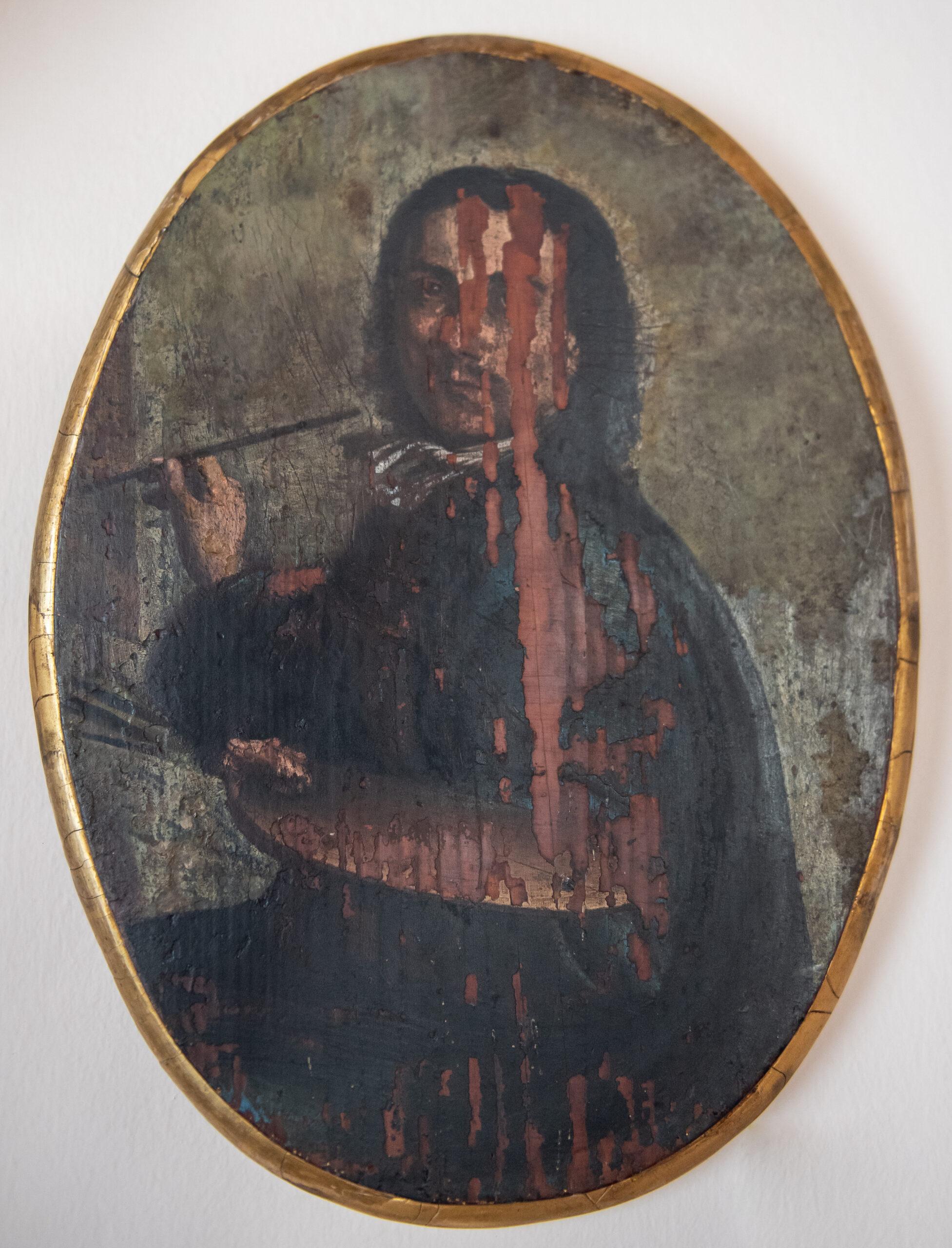
Tripo Kokolja:
Self-portrait,
tempera on wood, 1690.
Tripo Kokolja from Perast is the most important Baroque painter from the Bay of Kotor. Educated in Venice under the patronage of Archbishop Andrija Zmajevic from Perast, he painted the Church of St. Nicholas in Perast and the Church of Our Lady of the Rosary - the family mausoleum of Zmajevic family. His most significant artistic achievement is considered to be the interior decoration of the church on the island of Our Lady of the Rocks which consists of 68 paintings on canvas, painted over a period of ten years.

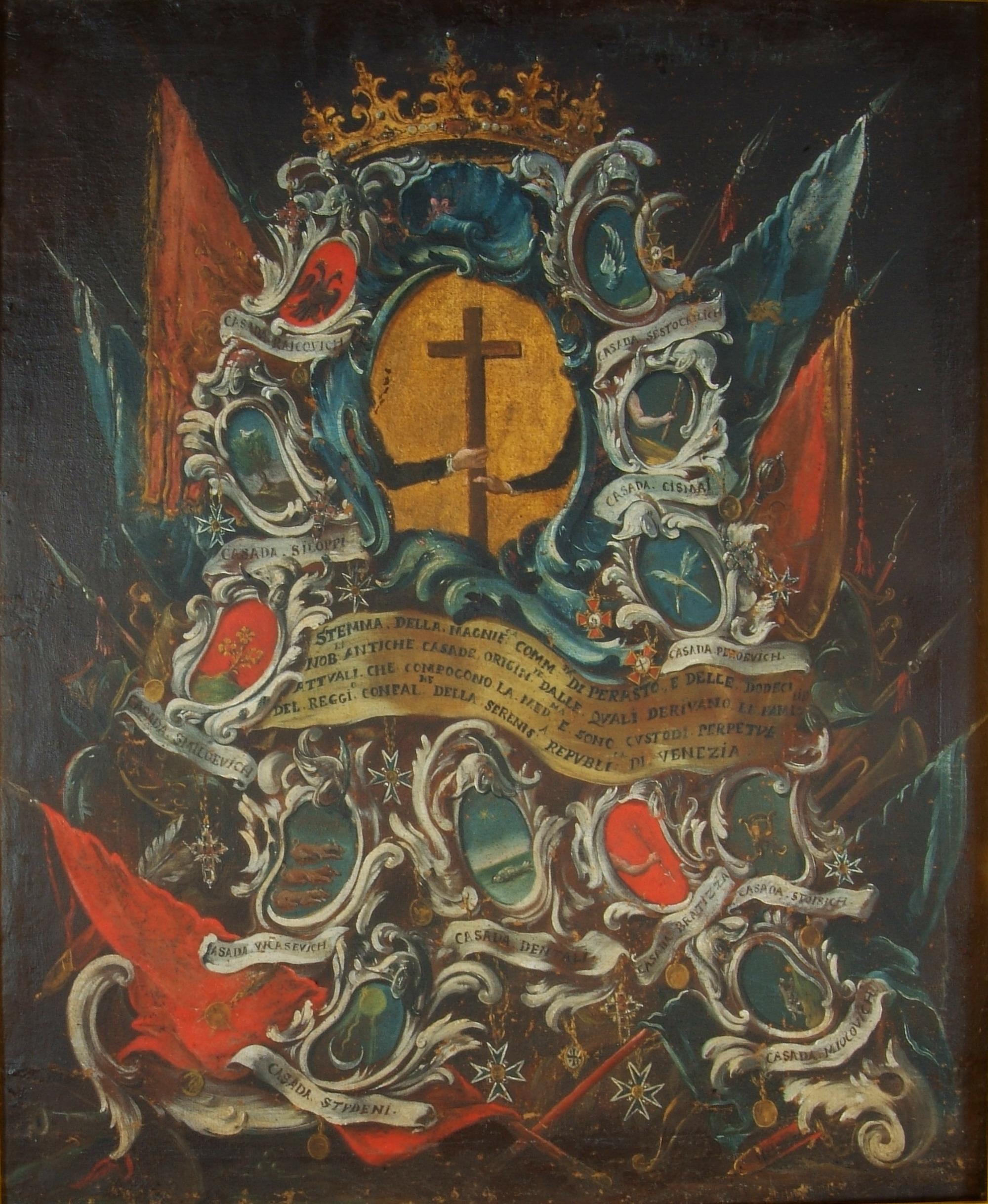
Unknown artist:
Coat of arms,
oil on canvas, 18th century
On the coat of arms of the city of Perast are two hands holding a cross representing the Christian unity of the inhabitants of Perast. Around the hands are the coats of arms of 12 renowned fraternities (kazadas) from Perast when it was under the rule of the Venetian Republic (1420-1797): Smilojevic, Studeni, Stojsic, Vukasevic, Silopi, Sestokrilovic, Cizmai, Miokovic, Dentali, Rajkovic, Bratica and Perojevic. These fraternities have been in existence since the Middle Ages and they are named after the original founding families. The importance of Perast at that time is also indicated by the fact that there were only 19 fraternities in the much larger city of Dubrovnik.

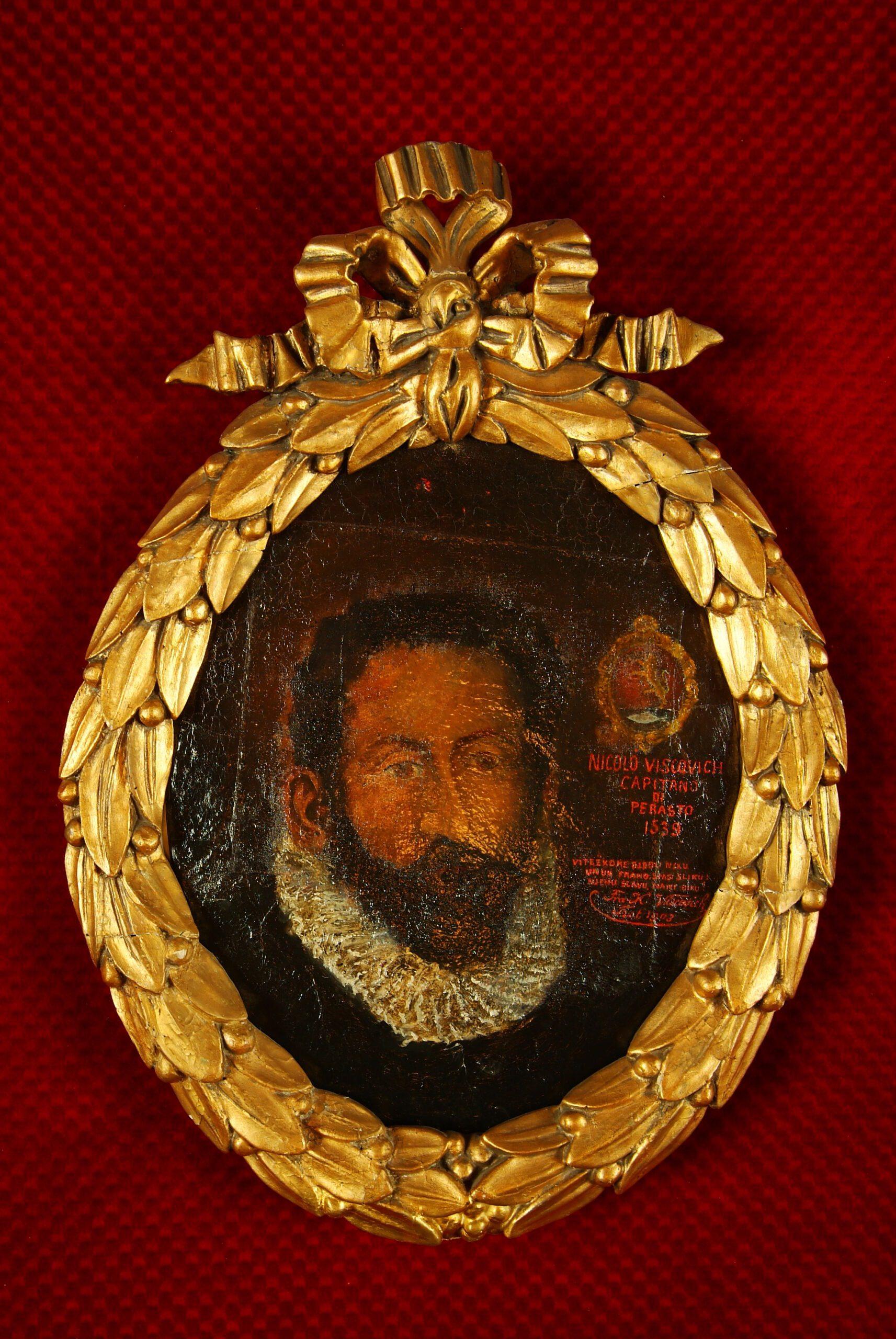
Unknown artist:
Portrait of Nikola Viskovic,
oil on canvas, 16th century
Nikola Viskovic was the first city captain of Perast. He led Perast's company in 1539 during the successful defense of Kotor against the Ottoman army under the leadership of the famous Hajrudin Barbarosa.

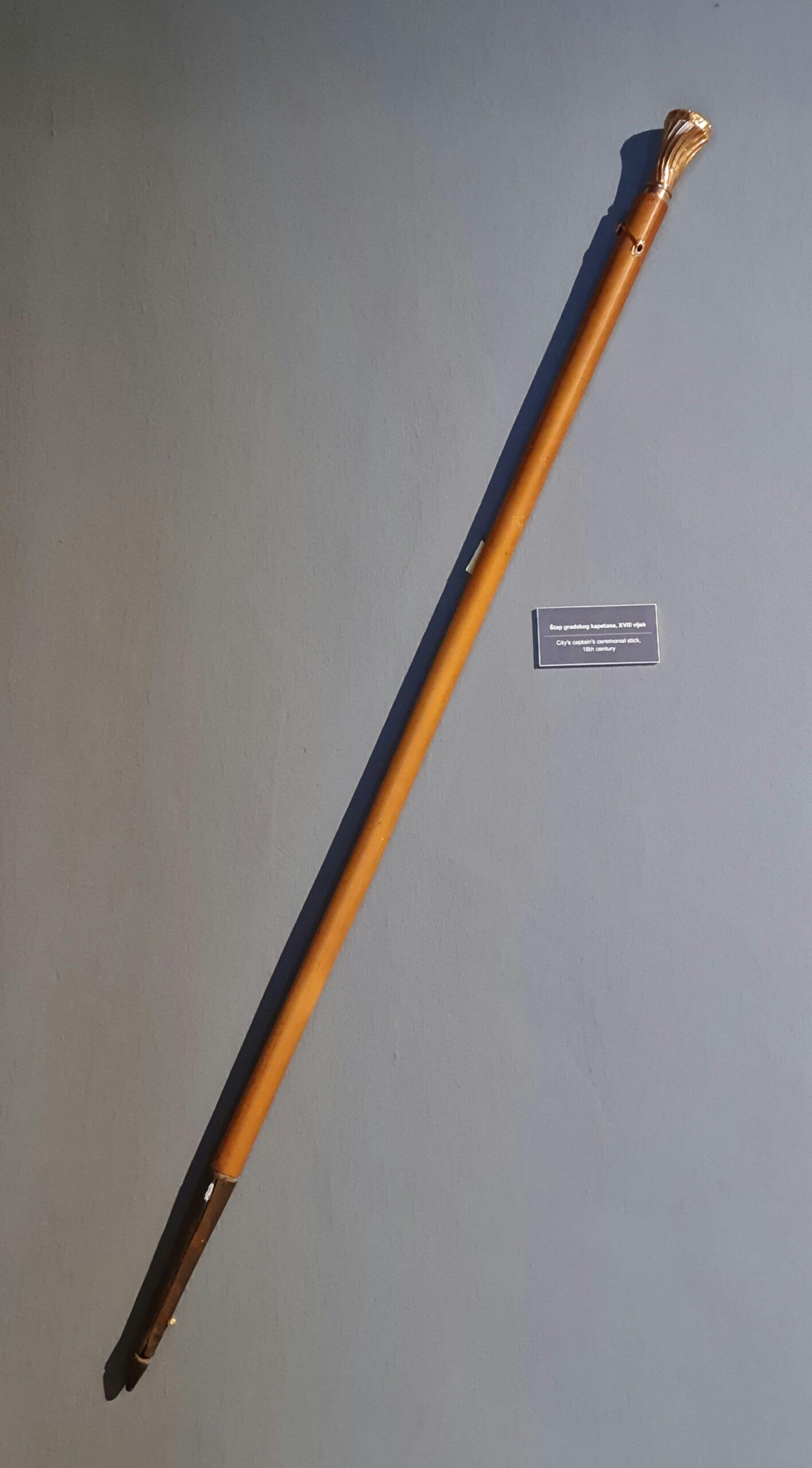
City captain's staff,
18th century
The city captain's staff is a symbolic sign of authority in Perast. The first belonged to captain Nikola Viskovic and the last one to Josip Viskovic, who was the city captain in 1797 during the fall of the Republic of Venice .

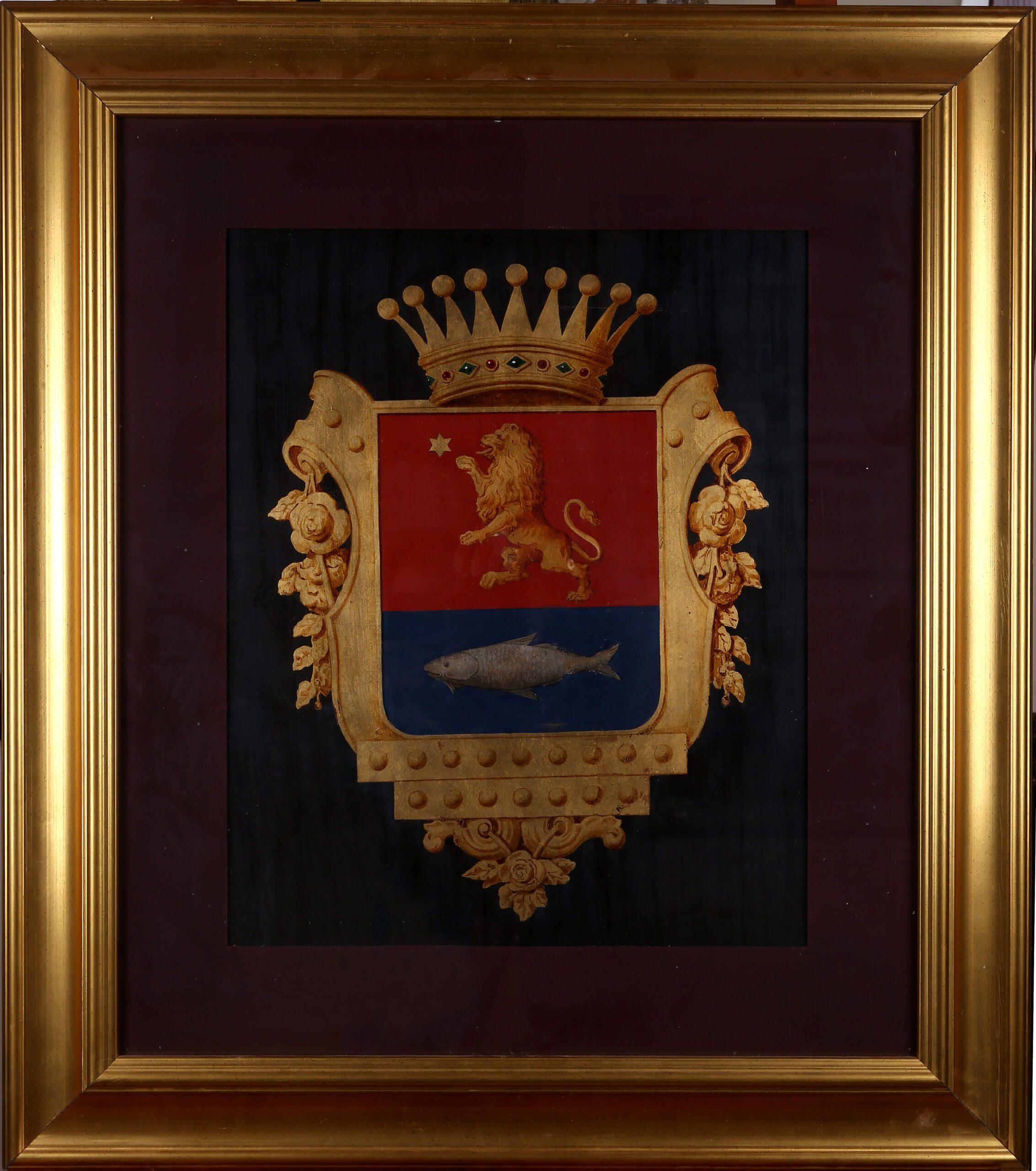
Coat of arms of the Viskovic family,
cardboard, 19th century
Coat of arms of the Viskovic family which includes the coat of arms of the Dentali fraternity to which they belonged. The coat of arms is a symbol of the nobility the Viskovic family acquired in 1695.

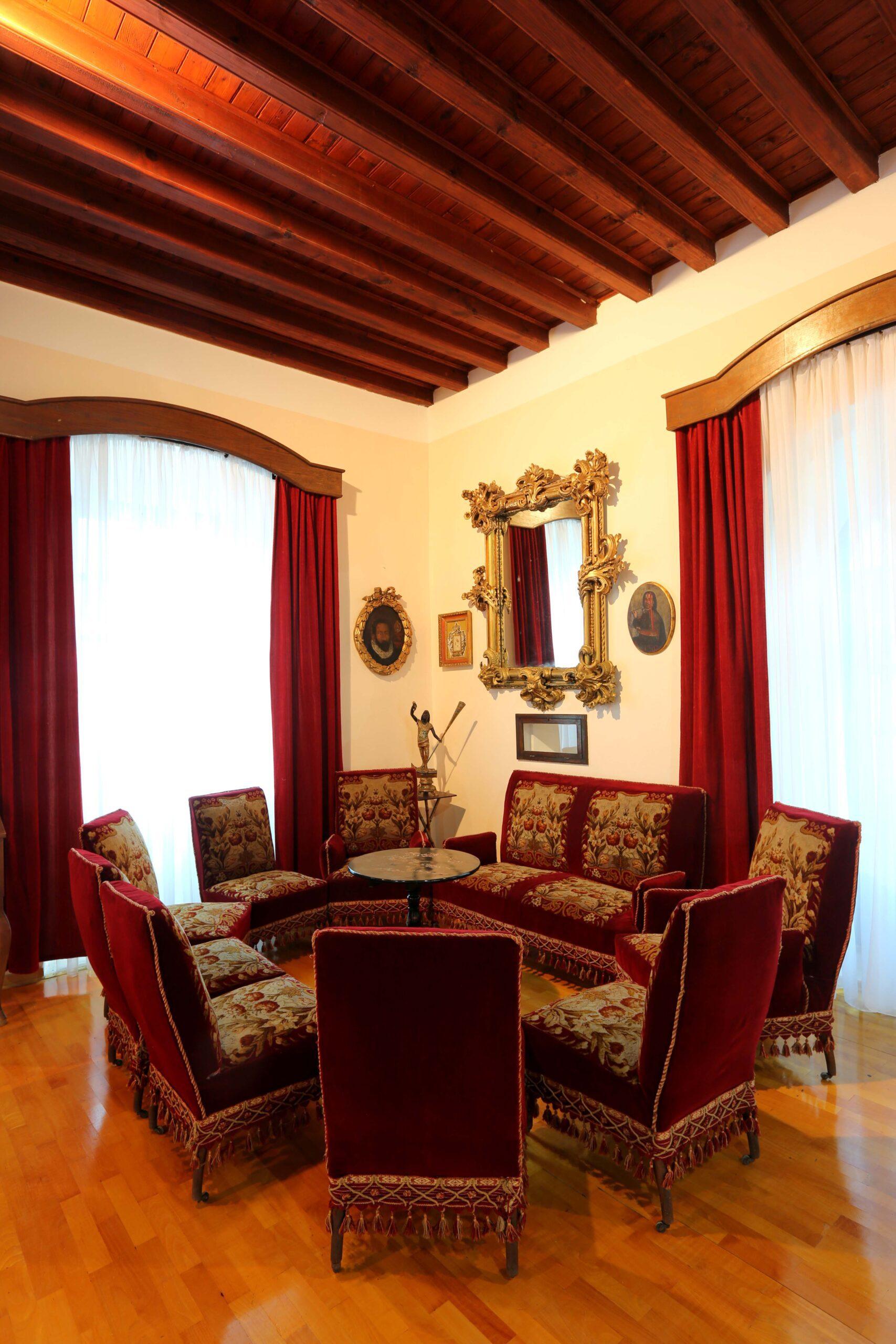
Drawing room of the Viskovic family house,
19th century
The drawing room of the Viskovic family palace testifies to the position and social status of this noble family from Perast, a family from which many prominent city captains, warriors, and diplomats orginated.

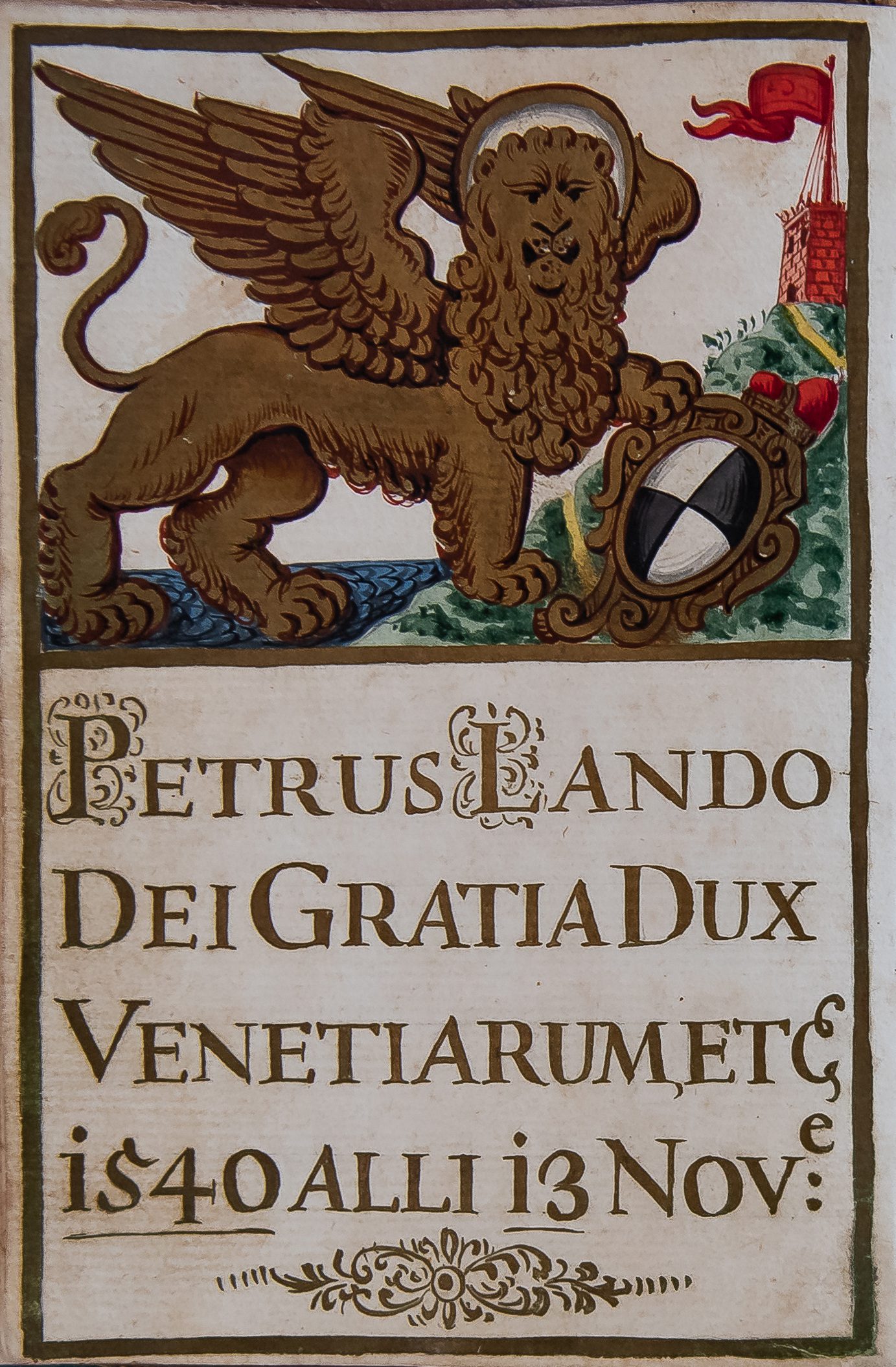
Privileges of Perast
(1540-1739)
The privileges of Perast detail the privileges granted to the city of Perast between 1540 and 1739 by the Republic of Venice. Preserved records document the activities of certain institutions throughout the centuries in economic, diplomatic and official relations with Kotor and neighboring countries.

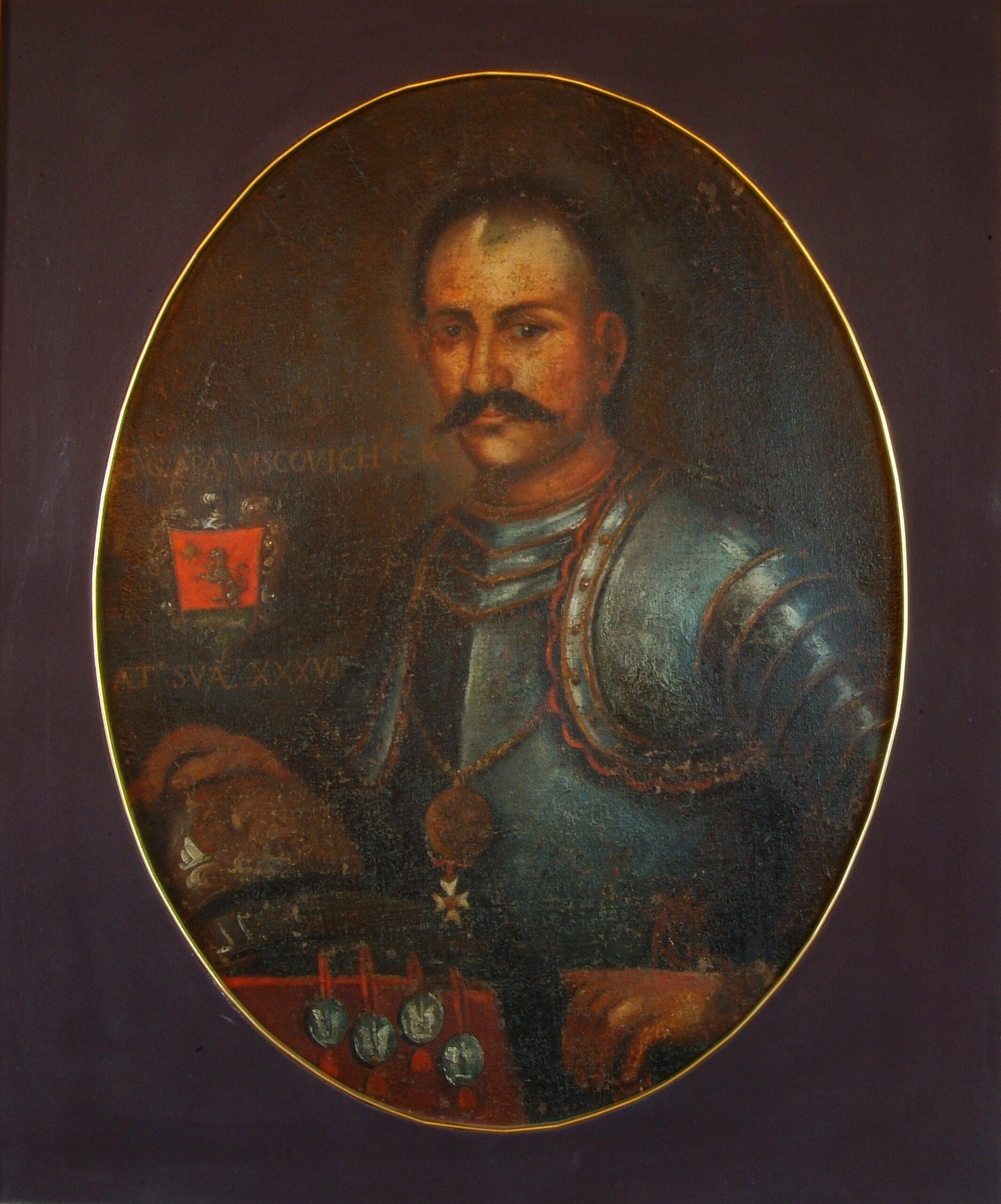
Tripo Kokolja:
Portrait of Frano Viskovic,
oil on canvas, 17th century
Frano Viskovic (1665-1720), a sailor, maritime merchant and warrior at sea, distinguished himself in battle against pirates and Ottoman military forces in the Peloponnese, Morea and Herzegovina. He was the first of seven people from Perast to receive the highest Venetian award, the Cross of Saint Mark and the title of Cavalier - Knight of the Order of Saint Mark.

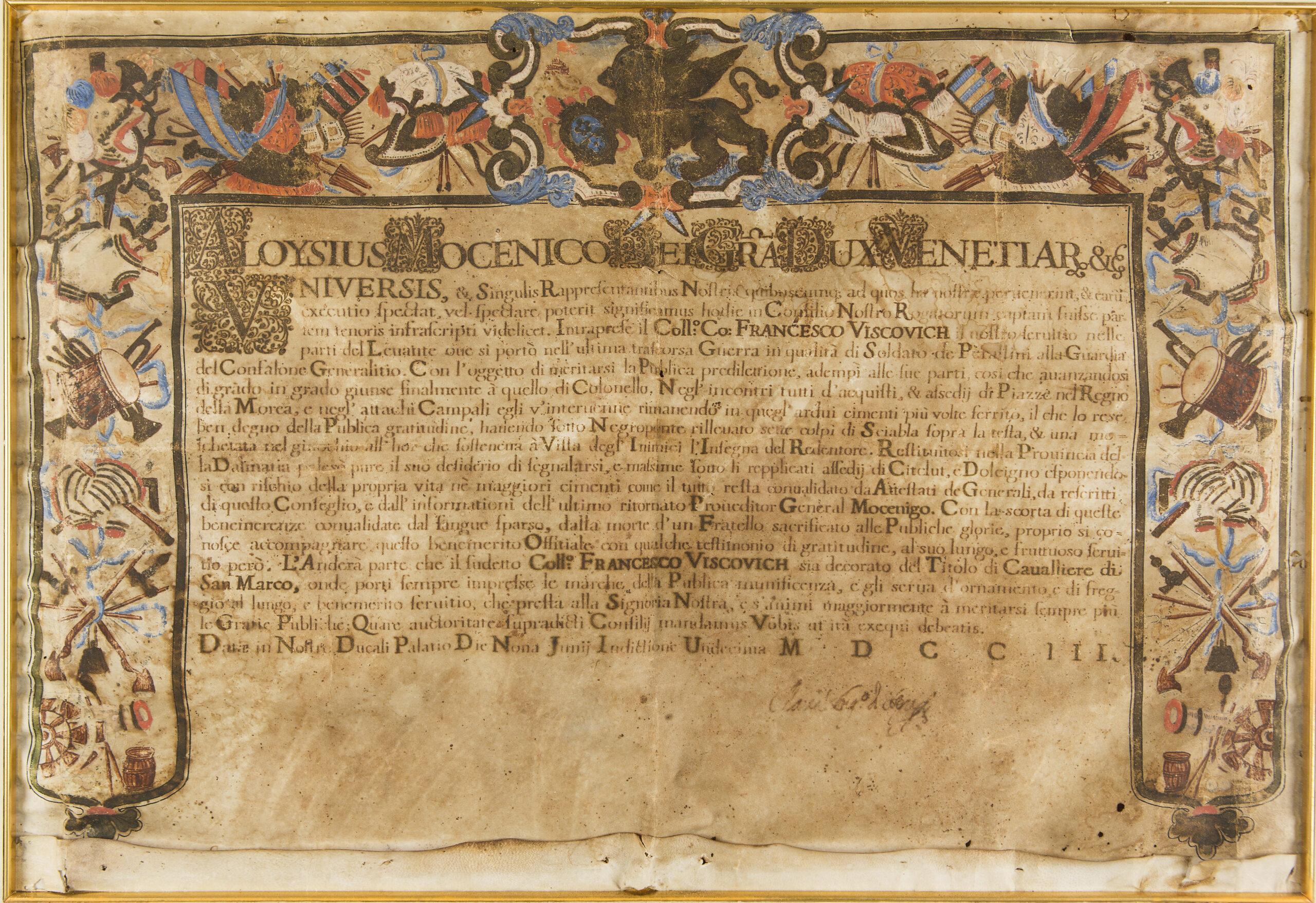
Charter for Frano Viskovic,
1703
A charter from 1703 that Colonel Frano Viskovic received for his merits in service and fighting under the flag of the Republic of Venice.

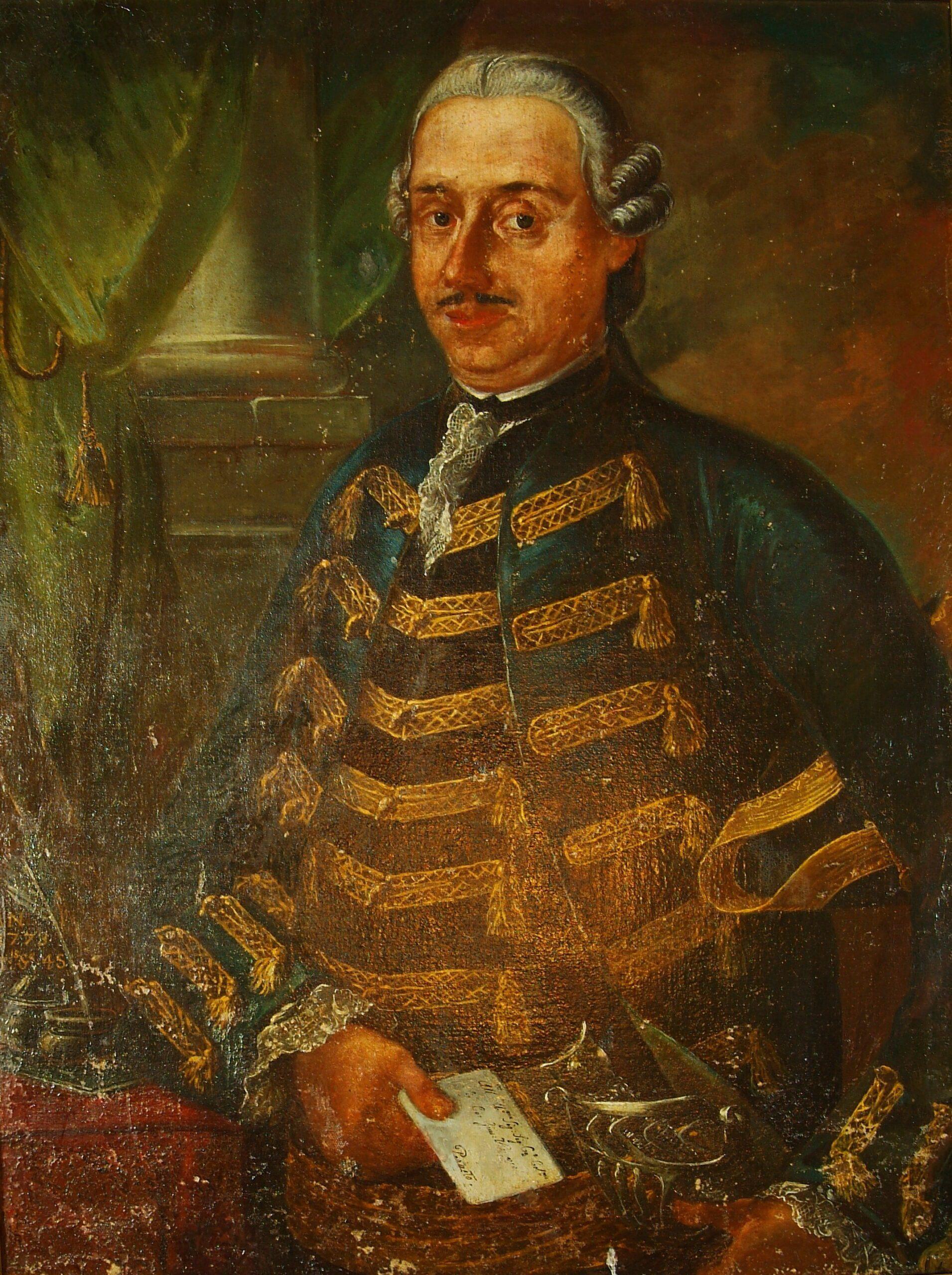
Unknown artist:
Portrait of Josip Viskovic,
oil on canvas, 18th century
Josip Viskovic was the last city captain of Perast. Two months after the official fall of the Republic of Venice in 1797, he gave a farewell speech to the people of Perast and lowered the Venetian flag with full honors.

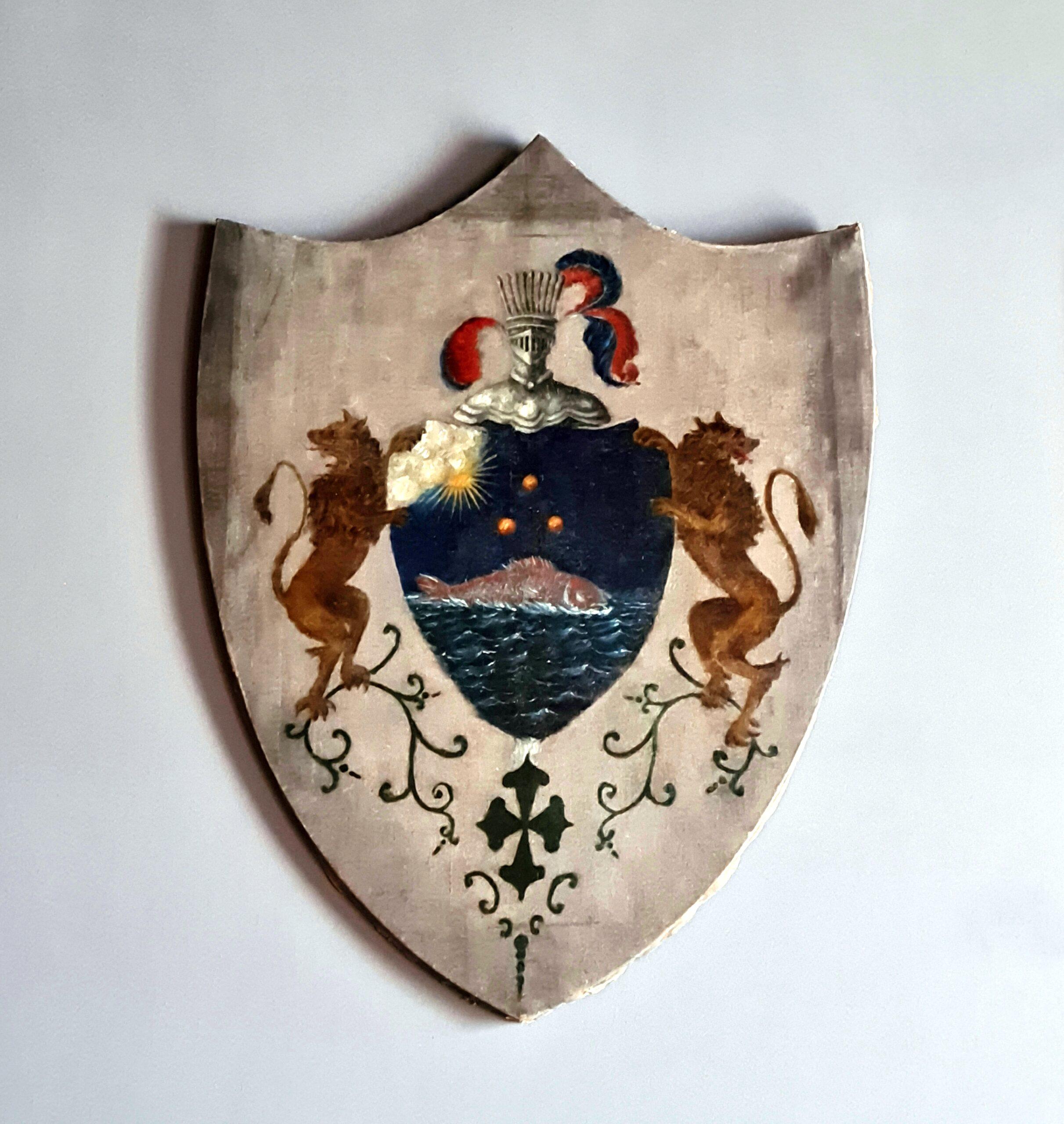
Coat of arms of the Balovic family,
oil on canvas, 19th century
The coat of arms of the noble Balovic family which includes a representation of a dentex fish, the symbol of the Dentali fraternity to which the family belonged.

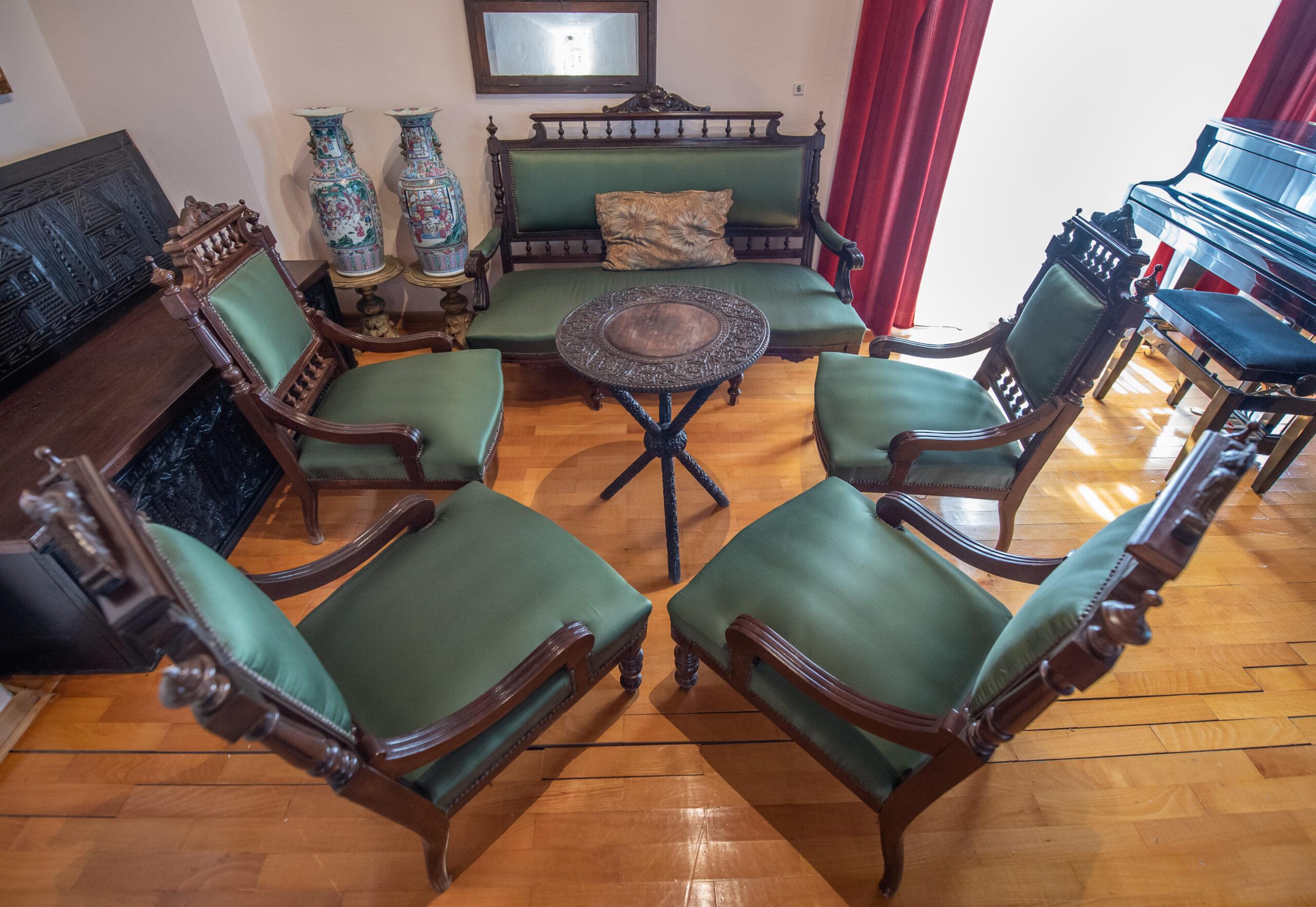
Drawing room of the Balovic family,
19th century
Drawing room of the Balovic family palace, where the Montenegrin ruler and bishop, Petar II Petrovic Njegos occasionally stayed as a guest. It is believed that it was in Perast in 1844 that he wrote his only love poem "A Night More Precious than a Century".

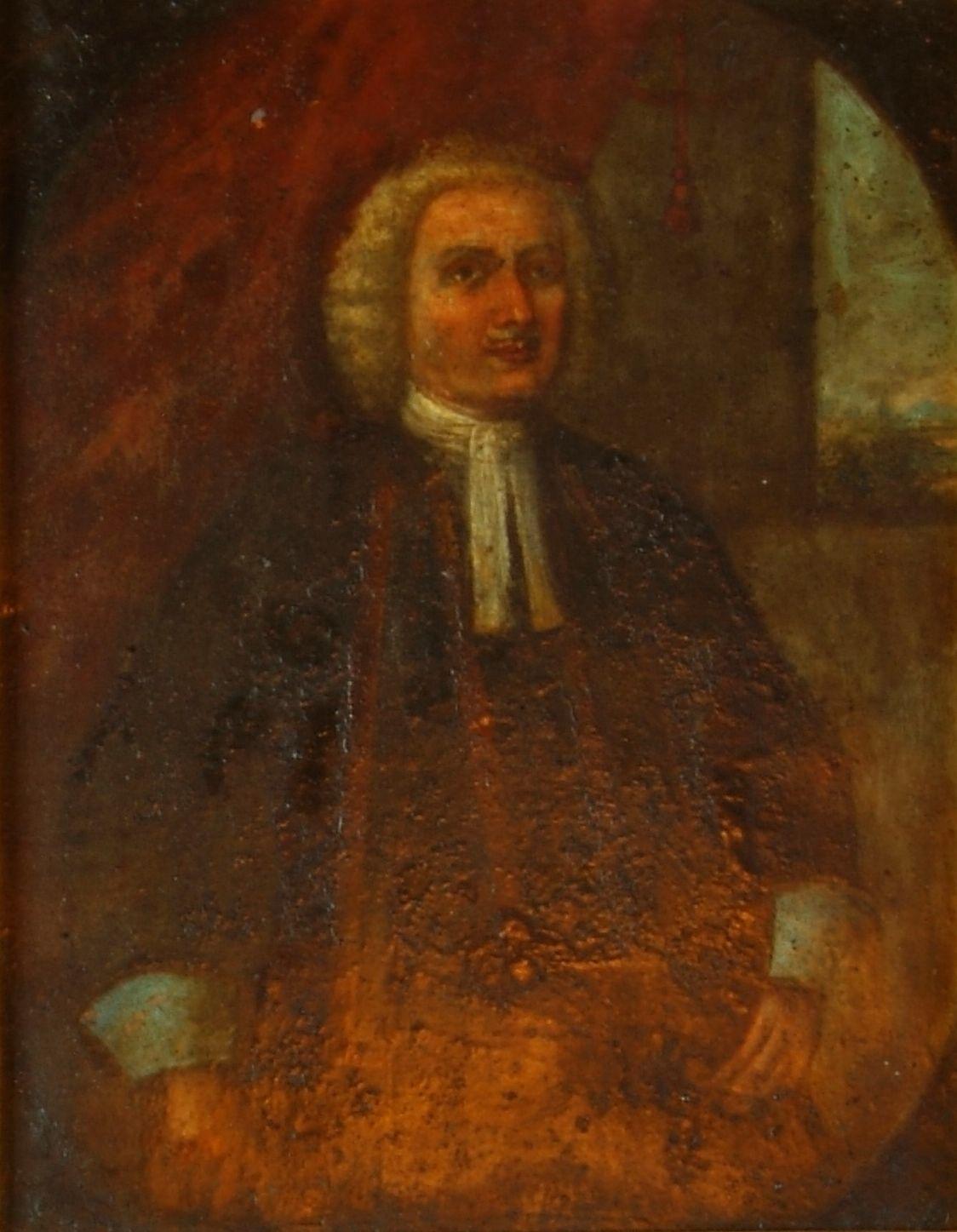
Unknown artist: Portrait of Julije Balovic,
tempera on copper, 17th century
Julije Balovic was a chronicler and collector of "bugarstice" songs, old folk songs with long verses that told of the battles that the people of Perast and Kotor had with the Ottoman military forces. In addition to collecting folk songs, Balovic wrote several literary works, the most famous of which is the Chronicle of Perast, in which he described events in Perast from the beginning of the 16th to the 18th century.

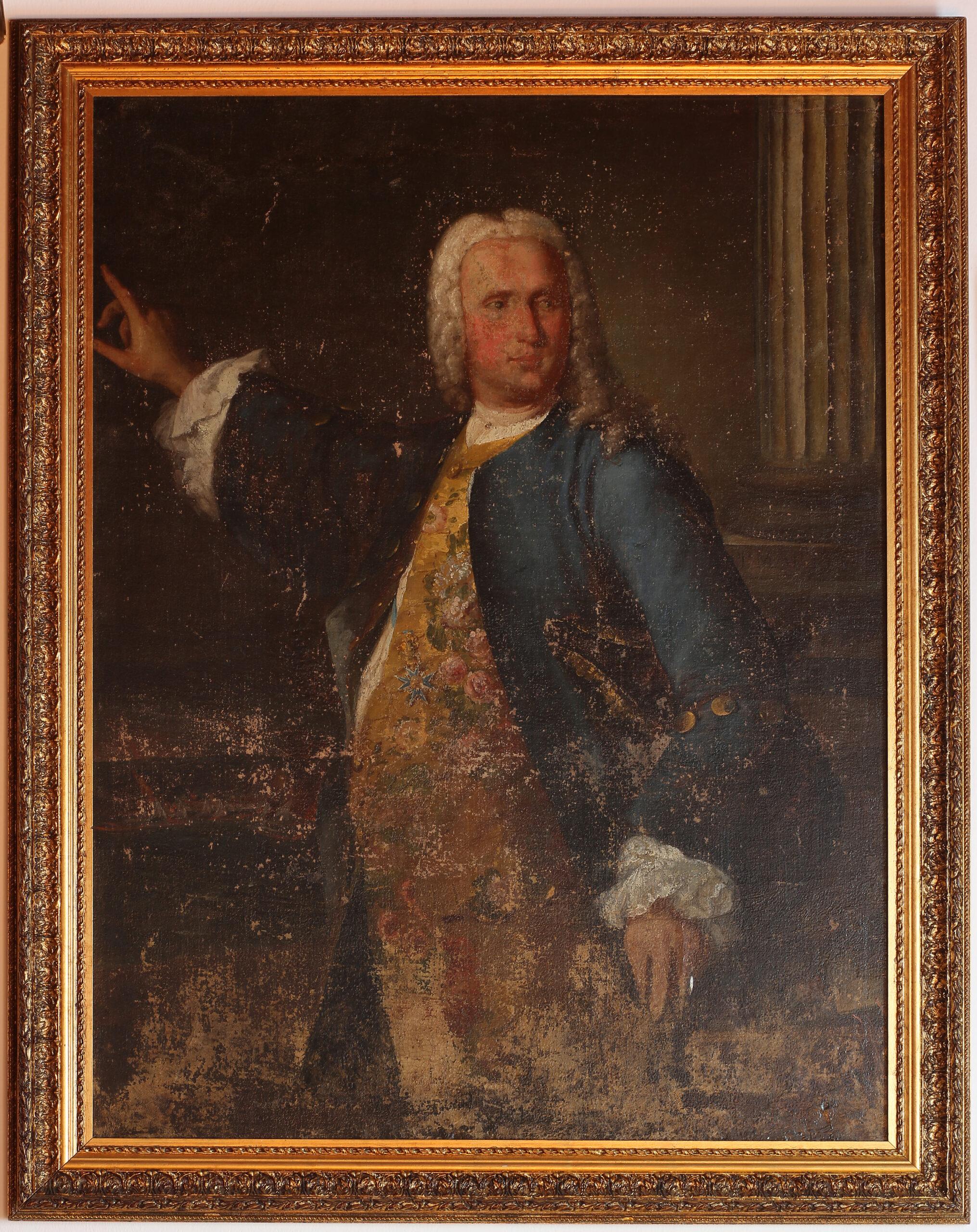
P. P. Martini:
Portrait of Ivan Bronza,
oil on canvas, 18th century
Ivan Bronza was a captain from one of Perast's noble familes, an expert on seafaring and a hero in battles with pirates. He especially distinguished himself in the Second Morean War and was the holder of the Venetian title of Cavalier - Knight of Saint Mark. This portrait is one of the few exhibited in this museum with the artist's signature.

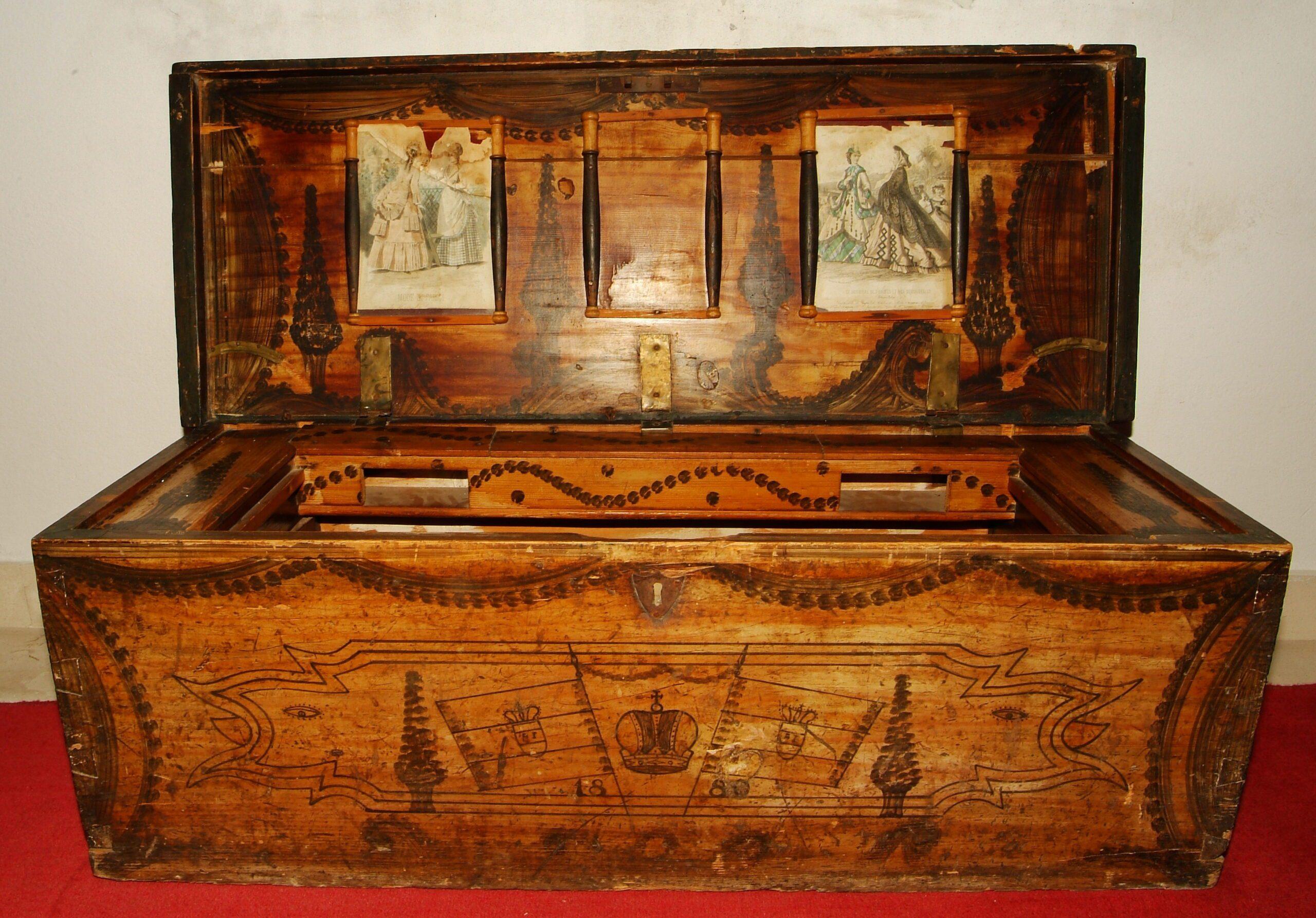
Sailor's chest,
19th century
A sailor's chest, brought back from a voyage made by one of the Perast's sea captains. It contains parts of the Perast navy uniform : jecerma (waistcoat - 20th century), ceverica ( cap - 20th century) and cemer (decorative belt- 19th century).

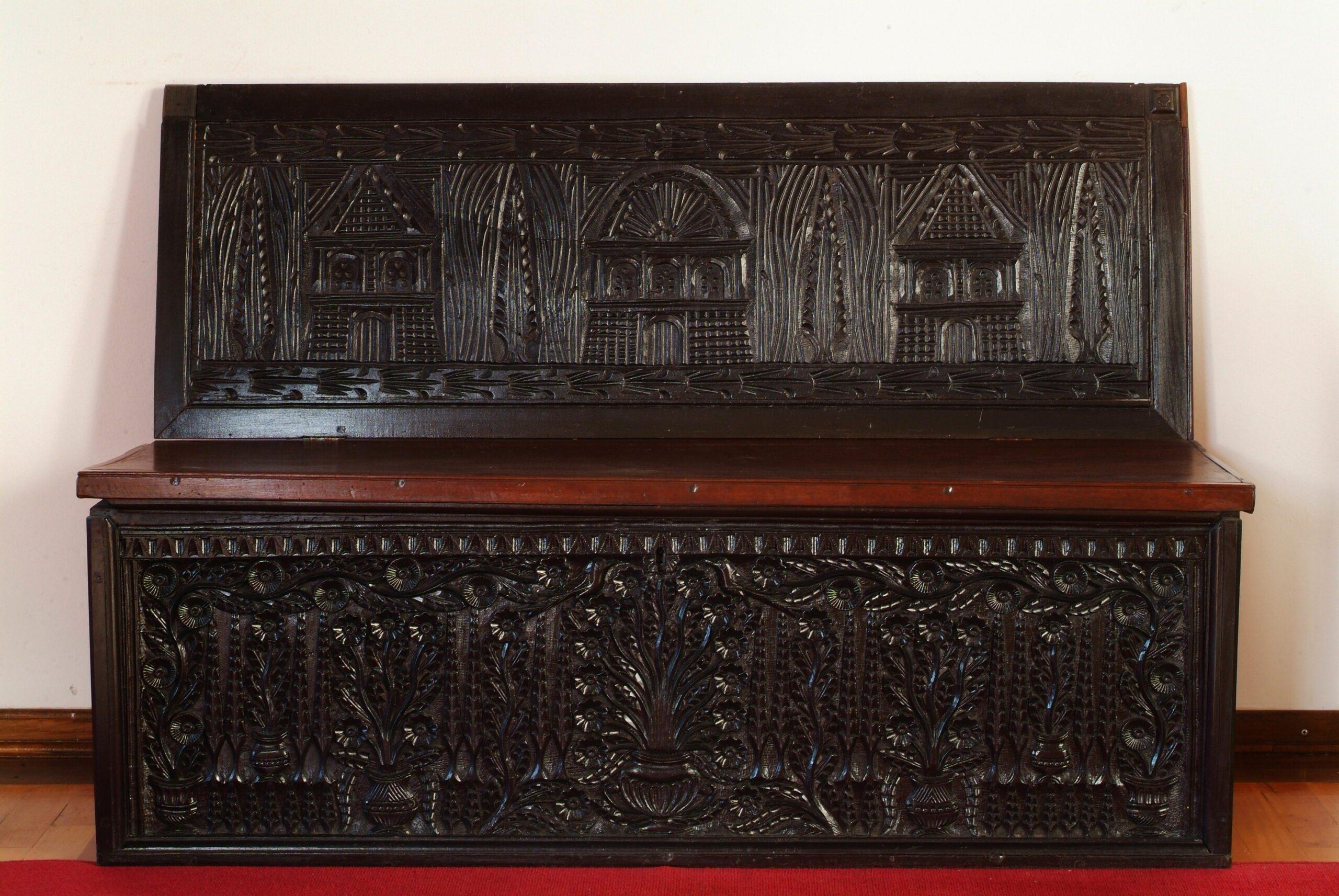
Woman's storage chest,
19th century
A woman's storage chest made of carved wood with a double lid which belonged to the Viskovic family. Chests like these were used to collect a girl's dowry, which consisted of personal items and gifts intended for the groom's family.

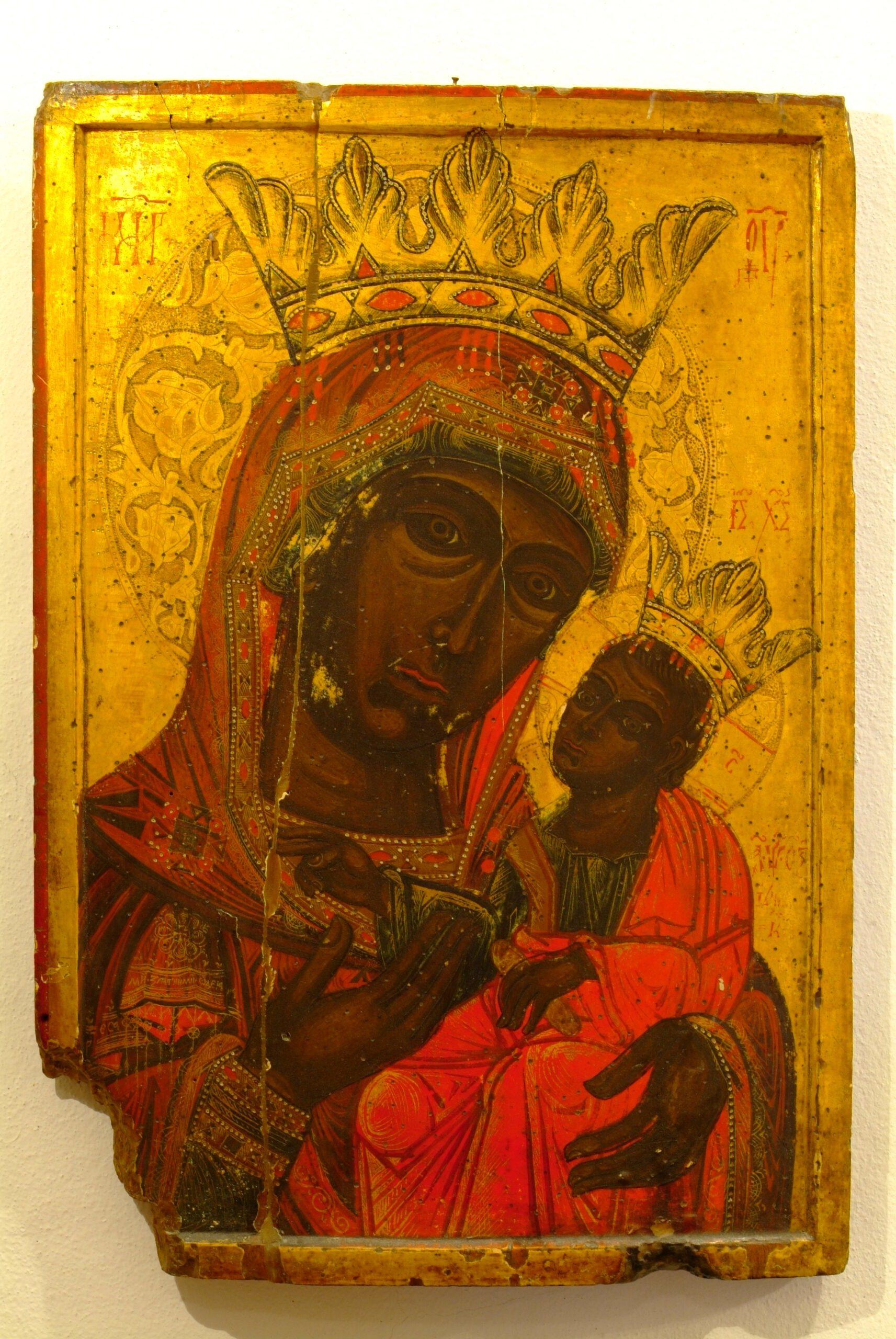
Petar Rafailovic:
The Virgin Mary with Christ,
tempera on wood, 1777.
The wooden icon of the Virgin Mary with Christ was made at the Rafailovic-Dimitrijevic icon painting school in Risan. This school was in existence from the 17th to the middle of the 19th century and produced numerous masters who created icons and iconostases for churches throughout the Bay of Kotor, Montenegro and Herzegovina.

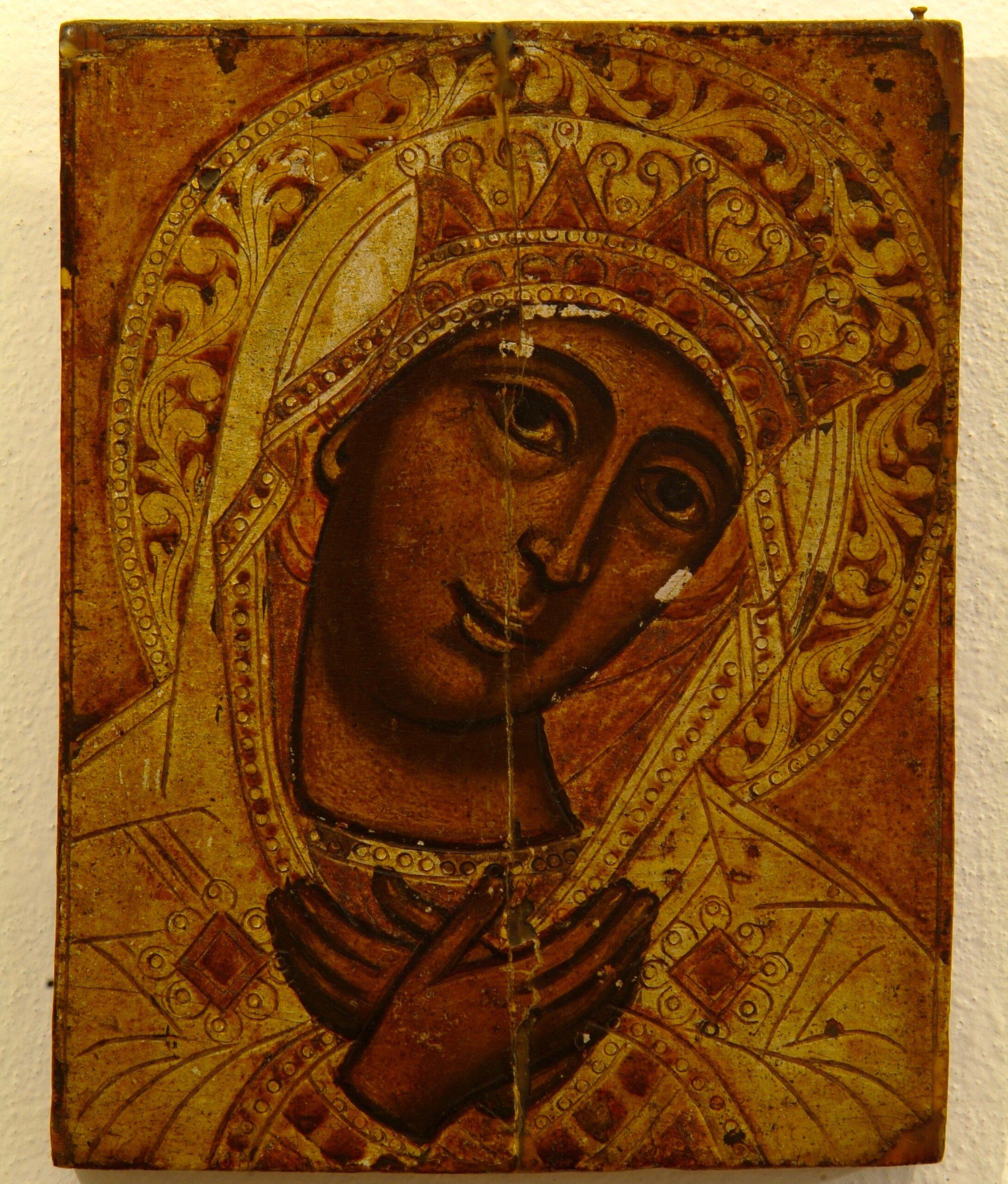
Risan school of painting:
The Virgin Mary,
tempera on wood, 18th century
The wooden icon with a representation of the Virgin Mary was made at the Rafailovic-Dimitrijevic icon painting school in Risan, which produced many masters who created numerous iconostases for churches throughout the Bay of Kotor, Montenegro and Herzegovina.

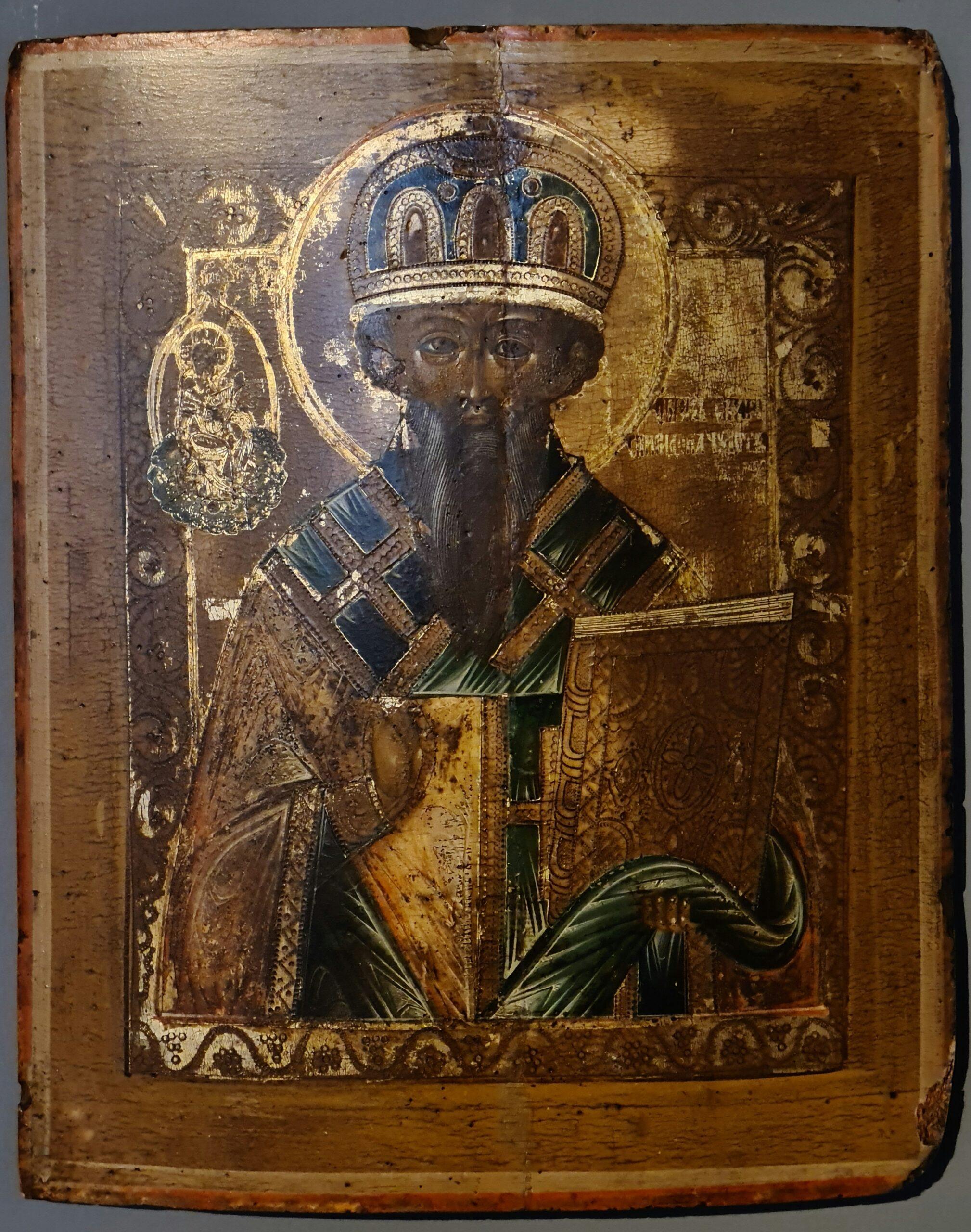
Unknown artist:
Saint Spiridon,
tempera on wood, 18th century
The art collection of Perast City Museum includes a valuable icon with a representation of Saint Spiridon, a Christian saint from the 3rd century who is considered the patron saint of seafarers. The numerous sailing ships bearing his name during the 18th century testify to the veneration of Saint Spiridon in the Bay of Kotor.

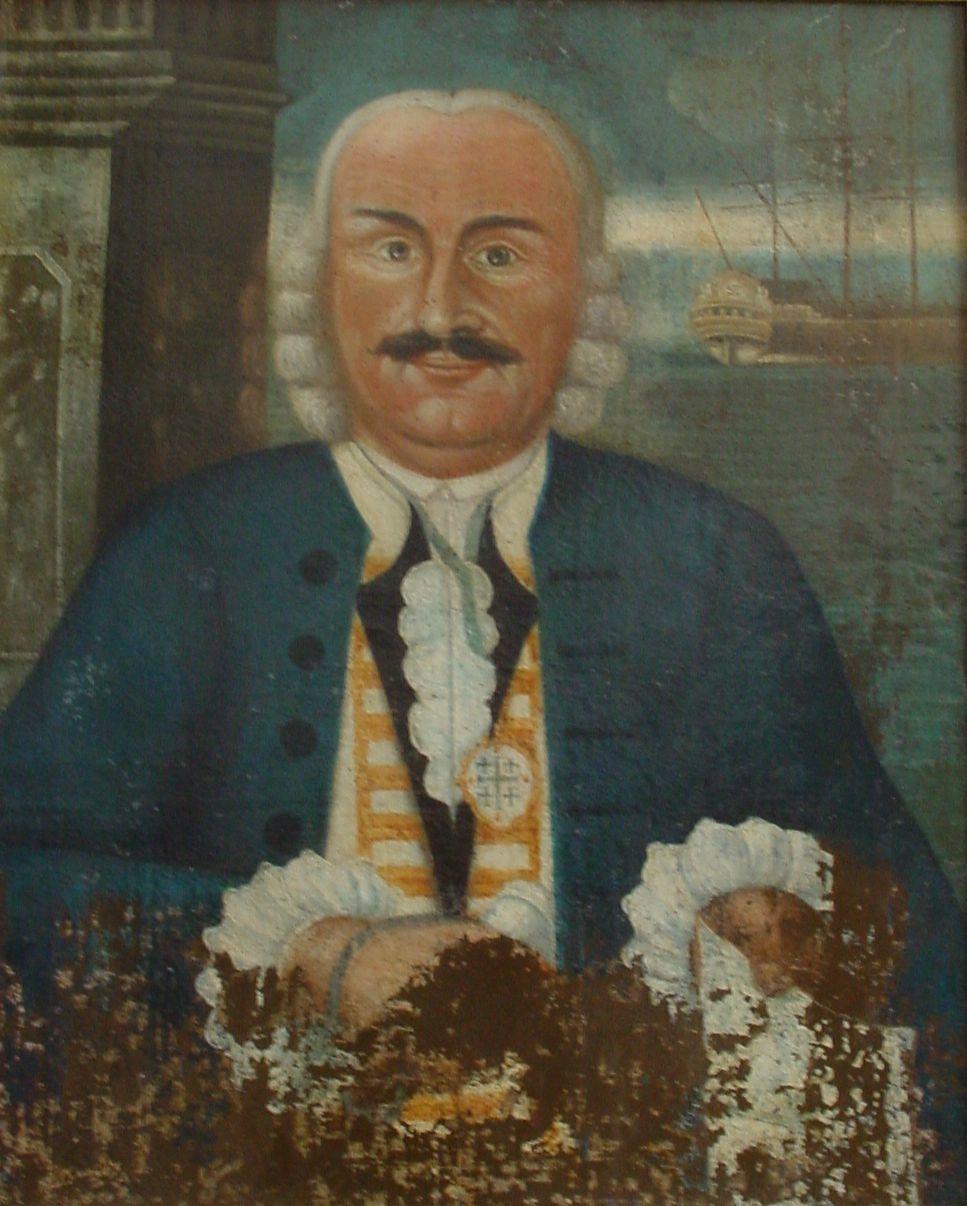
Unknown artist:
Portrait of Krsto Djoka,
oil on canvas, 18th century
Krsto Djoka was a well known sailor from Perast and a warrior who fought for the Republic of Venice, for his merits in battle he was awarded the Order of the Jerusalem Cross by Pope Clement XI in 1710.

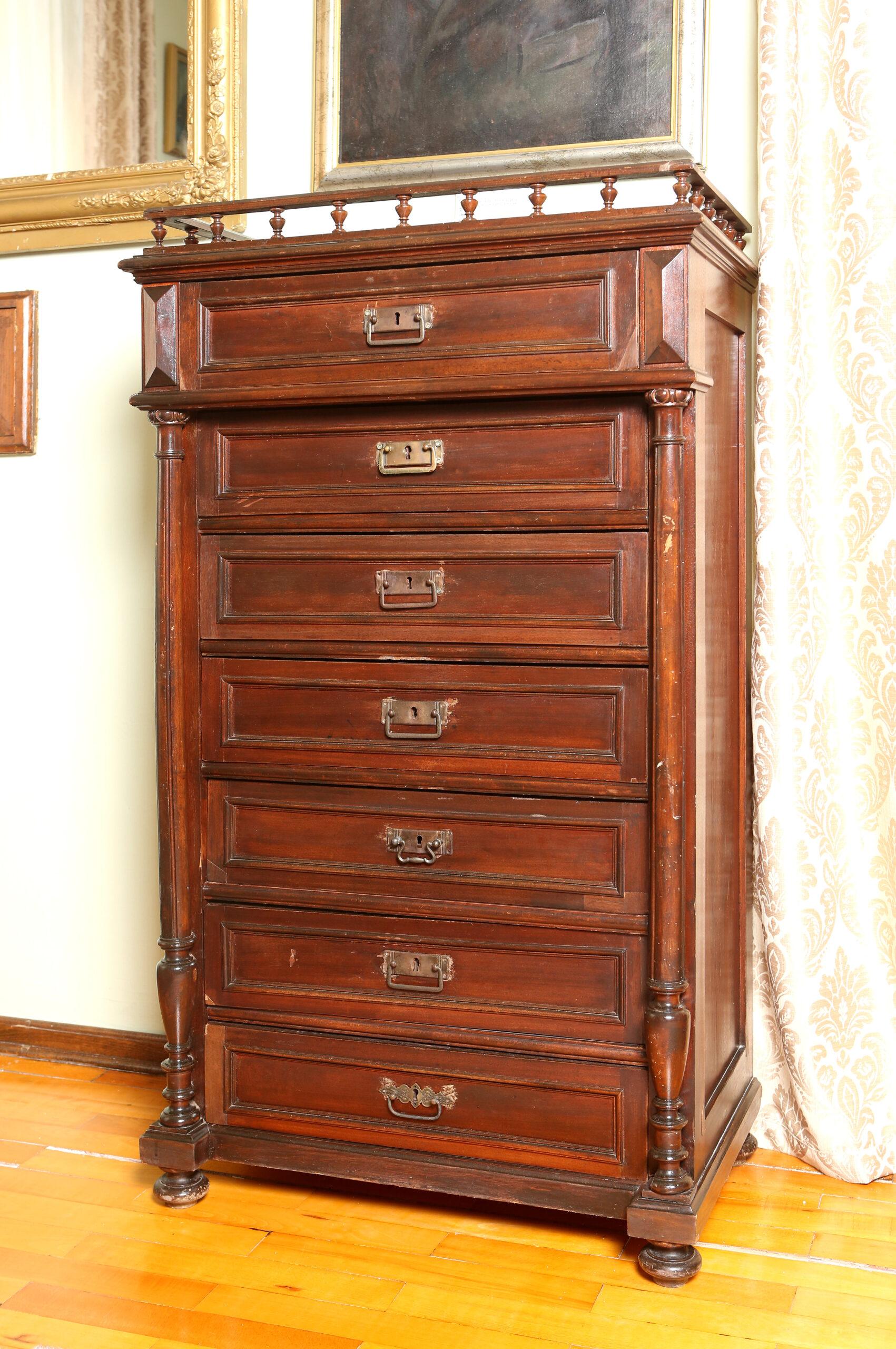
Chest of drawers - settegiorno,
19th century
A unique type of wooden chest with drawers in which clothes are separated for each day of the week. The largest drawer was reserved for Sunday, as Sunday was most often the day people would go to church, visit family or go to other gatherings and celebrations.

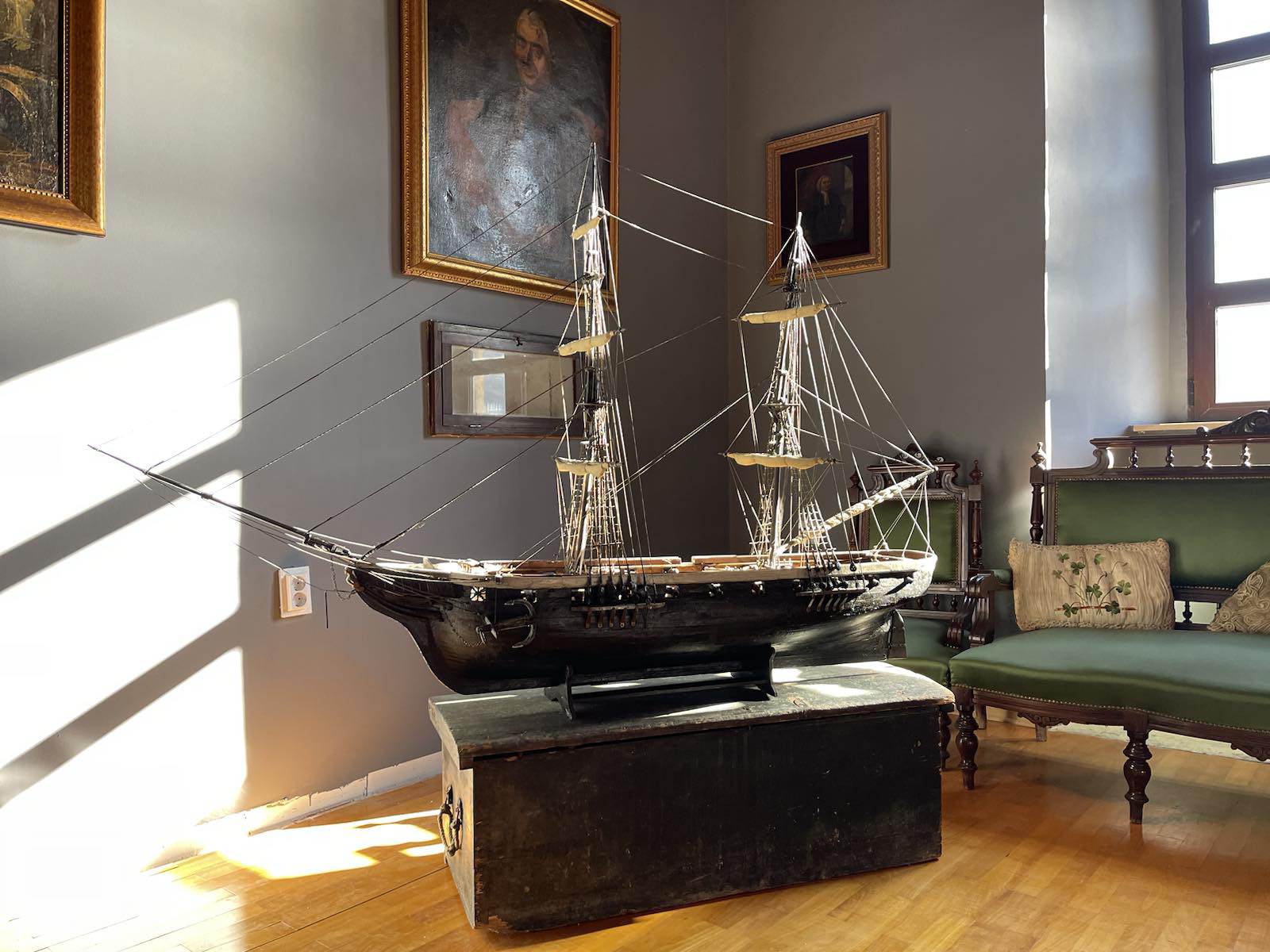
Model of the sailing ship Adriana captained by Josip Braticevic,
20th century
The sailing ship Adriana from the 19th century is one of the last ships built in Perast, owned by Captain Josip Braticevic. This sailing ship was made of wood, with two masts, and along the entire length of the hull, on each side, there were 10 cannons. Under the command of Captain Josip Sirovic, it sank in front of the Egyptian port of Alexandria.
